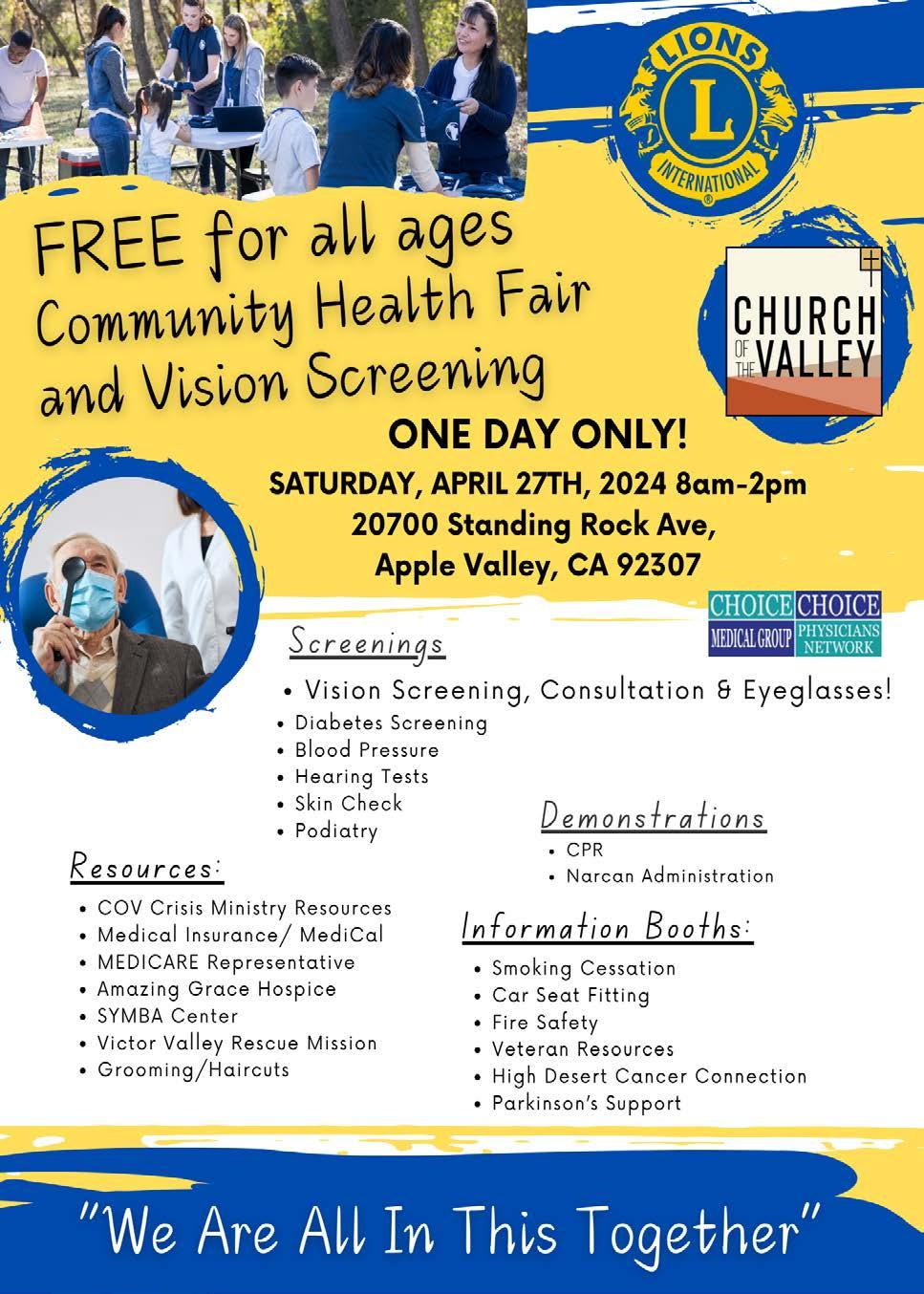














A location for Seniors!
A p l a c e t o r e c e i v e a n s w e r s t o y o u r q u e s t i o n s . W e w a n t t o m a k e s u r e t h a t y o u k n o w a l l t h e s u p p o r t & r e s o u r c e s
a v a i l a b l e t o y o u i n o u r c o m m u n i t y .
R e s o u r c e w a l l o f i n f o r m a t i o n f r o m l o c a l
b u s i n e s s e s a n d n o n - p r o f i t s t h a t c a t e r t o o u r S e n i o r s
W e h a v e M e d i c a r e 1 0 1 m e e t i n g s i n a g r o u p O R p e r s o n a l m e e t i n g i n o u r R e s o u r c e C e n t e r w i t h a t r u s t e d M e d i c a r e S p e c i a l i s t O R w e c a n s c h e d u l e f o r s o m e o n e t o c o m e t o y o u . . i n t h e c o m f o r t o f y o u r o w n h o m e W e w o r k w i t h l o c a l i n s u r a n c e s p e c i a l i s t s t h a t w e t r u s t a n d w i l l f o l l o w u p t o m a k e s u r e a l l o f y o u r n e e d s , q u e s t i o n s , a n d c o n c e r n s a r e m e t !
Providing local support and resources to help cancer patients and their circle of supporters navigate through their cancer journey. Wigs, * Gifts * Pillows * Blankets Support Groups * Classes & Events. www.hdcancerconnection.com
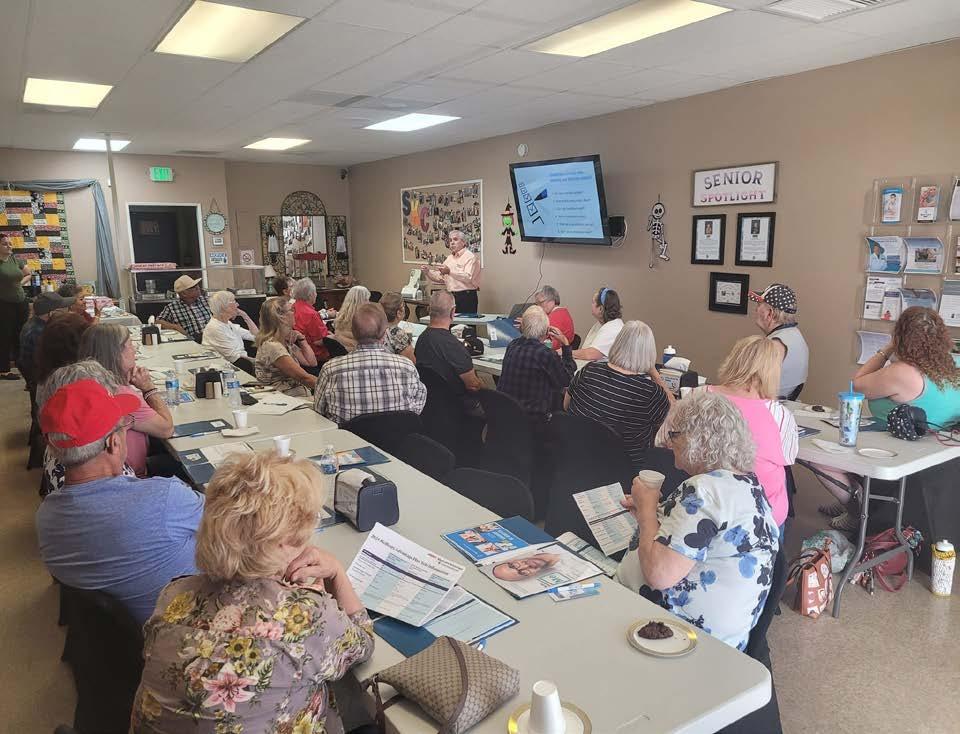
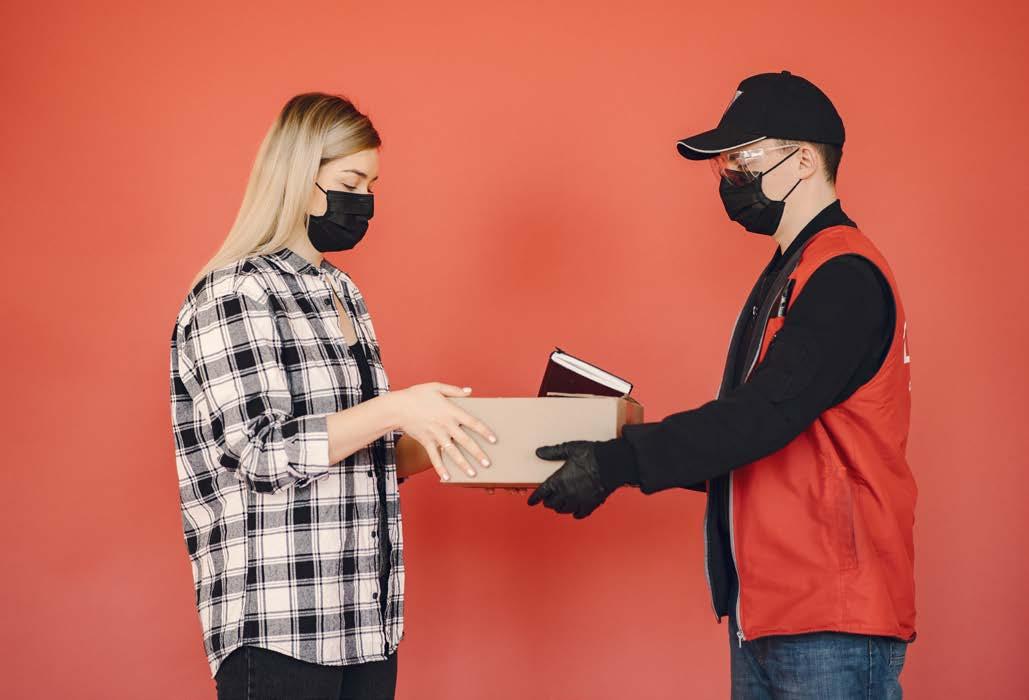
SPRING IN THE HIGH DESERT means ‘Wildflowers’ are in bloom. This year we did not have the amount of rain fall as last year yet still enough to pollinate the desert floors. We ran a four-page article with photos last year. Here is that link.
Spring is also the start of the season for Home Shows, County Fairs, car shows and concerts in the parks at our local communities. We will be listing many of them on our Events & Calendar page. We encourage you to take advantage of our FREE coupon for the Home Show April 5-6-7.
Be sure to stop by our booth to say hello.
I always share with our readers that it is our Advertisers and Subscribers who make the PULSE possible. For without them there is NO PULSE newspaper. If you are not yet a subscriber, please see our ad on page 7 in this issue. Letting our advertisers know by using their products or service, or just letting them know you see their ad in the PULSE is greatly appreciated.
Our TEAM of writers are the foundation we have built the PULSE on. If you too enjoy their stores please let us, and them, know.
A friendly reminder, PLEASE CHECK ON YOUR ELDERLY neighbors.



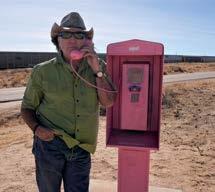



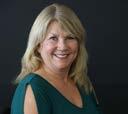

THERAPY (DBT) is a type of psychotherapy that combines elements of cognitive-behavioral therapy (CBT) with techniques derived from Eastern mindfulness practices. Originally developed by psychologist Dr. Marsha Linehan, PhD in the 1980s to treat individuals with borderline personality disorder (BPD), DBT has since been adapted to help people with a range of mental health conditions and has quickly become a go-to therapy for countless individuals. You may have even heard of DBT and didn’t know it. Have you ever heard someone say that they practice deep breathing, counting to 10, or “stop to smell the roses?” If so, then those are part of DBT.
At its core, DBT aims to help individuals who struggle with intense emotions, difficulty regulating their emotions, impulsive behaviors, and unstable relationships. It provides them with practical skills to cope with life’s challenges more effectively and to build a life worth living.
Here’s a breakdown of some key components of DBT:
-Dialectics:
The term “dialectics” refers to the idea that two seemingly contradictory concepts can both be true at the same time. In DBT, this means accepting that a person can want to change while also accepting themselves as they are. It’s about finding a
balance between acceptance and change.
-Mindfulness:
Mindfulness is a central component of DBT. It involves paying attention to the present moment without judgment. Through mindfulness exercises, individuals learn to observe their thoughts, emotions, and sensations without reacting impulsively. This helps them develop greater awareness and control over their actions.
-Distress Tolerance:
DBT teaches individuals how to tolerate distressing emotions without resorting to harmful behaviors. Techniques such as distraction, self-soothing, and improving the moment are used to help individuals ride out intense emotions without making impulsive decisions.
-Emotion Regulation:
Many individuals with emotional dysregulation struggle to understand and manage their emotions effectively. DBT provides tools and strategies to identify and label emotions, understand the functions of emotions, and regulate emotional responses in healthier ways.
-Interpersonal Effectiveness:
Building and maintaining healthy relationships can be challenging for individuals with emotional difficulties. DBT helps individuals develop assertiveness skills, set boundaries, communicate
effectively, and navigate conflicts in relationships.
How DBT Works: DBT typically involves individual therapy sessions and skills training groups. In individual therapy, the therapist and client work together to address specific issues and apply DBT skills to real-life situations. Skills training groups, on the other hand, provide structured lessons and practice exercises to teach DBT skills in a group setting.
Throughout the therapy process, clients learn to apply DBT skills in their daily lives, gradually building mastery and confidence in managing their emotions and behaviors. The therapeutic relationship is also a key aspect of DBT, with therapists providing validation, support, and encouragement as clients work towards their goals.
DBT is effective for a range of mental health conditions, including borderline personality disorder, depression, anxiety disorders, eating disorders, substance use disorders, and more. If you struggle with intense emotions, difficulty regulating your emotions, impulsivity, or unstable relationships, DBT may be beneficial for you.
It’s important to work with a qualified mental health professional who is trained in DBT to receive the most effective treatment. Together, you can explore whether DBT is the right fit for your needs and develop a personalized treatment plan to help you achieve your goals for emotional wellbeing and personal growth.

RONALD WEASLEY (of Harry Potter fame) once mused: That’s what they should teach us here, he thought, turning over onto his side, how girl’s brains work . . . it’d be more useful than Divination anyway . . .
If Ronald Weasley had been at the meeting of the High Desert branch of the California Writer’s Club last month, he would have seen that women’s brains work quite well indeed. It seems that the best way for men to understand women is to start listening to them.
On Wednesday, March 6th, the HDCWC had a meeting at the Apple Valley Library with a panel of professional women

being interviewed by the club’s own Mary Thompson, the leader of the club’s Poemsmiths and some special events, like this one. Mary asked insightful questions about the women’s careers and the advice they would give to other women.

Ginny Margotta spoke about being an editor. She shared her experiences of building her business from the ground up. She told us that her high quality is what keeps her in business.
Joan Rudder-Ward shared about her career as a photographer, film producer, and youth influencer. Joan’s mission is helping teen girls find themselves and to know their worth.
Freddi Gold has had quite a career as a Marriage and Family Counselor and as a licensed Hypnotherapist. She has also been a radio host and a professor at the local college. Freddi shared how she managed to juggle all these different roles and still be a wife and a mom.
Barbara Schnier shared with us about her different early jobs (some of them quite unusual) and becoming a lawyer working in San Diego. She recently semi-retired and moved her law office to the High Desert.
Cindy Frye is a very accomplished journalist who shared with us what she learned about getting a story and getting it right. She also told us about a particular situation where she was held back simply because she was a woman. She quit that job.
Lorelei Kay was the CEO (Child Enthusiastic Officer) of a preschool at her home called, Joyful Noise Child Care. She talked about the responsibility of caring for very small children and keeping them safe—a very big job.
After a snack break, Rosanne Smith, a friend of Mary’s, did a


performance




life, she told us about her childhood, her car crash that changed her life, and her relationship with George W. Bush and being a First Lady. Her casual tone was perfect. She captivated us with her natural performance.
This was an excellent evening where women were appreciated for the difference they are making in our world.

FT. IRWIN IS IN THE MIDDLE OF NOWHERE, just north of Barstow. It begins where 10-mile stretch ends.
I was stationed there with the OPFOR from 1988-1994.
At night, downrange, seated on the turret of my tank, drinking some coffee and eating a slice of cherry-nut cake from an MRE, I could see the lights of Las Vegas form a bubble beyond the North Wall, while the night sky overhead was crowded with stars. I marveled at creation and the hand that fashioned it.
It’s here that troops from units across the country are sent to train for war.
They come from different places like Fort Hood in Texas, Fort Benning in Georgia, and even Fort Liberty—formerly Fort Bragg—the home of the 82nd Airborne. And they’re Marines, and sailors, and zoomies— an affectionate term for Air Force personnel—as well as troops.
The base itself is like an island of civilization in a vast expanse of desert and at its entrance is a unique and historyrich feature of boulders

APPLE VALLEY, APRIL 1ST – The Ruth and Naomi Project, Inc., a non-profit champion for uplifting lives of seniors, proudly announces the opening of its second residence on Rincon Road in Apple Valley, marking a significant step forward in offering dignified, compassionate support to our most vulnerable seniors.
This new residence is not just a home; it’s a community where seniors enjoy activities, nutritious meals, and comprehensive care in a loving environment. “Expanding our reach means touching more lives with compassion and dignity,” says Robin Smith, the project’s founder.
The organization invites the community to be a part of this noble cause. Whether it’s through volunteering, donations, or spreading the word, your support makes a real difference.
Interested in learning more about the Ruth and Naomi Project, Inc., including room availability and how to contribute to this life-changing work, please contact 760403-2699. Your support can make a world of difference in the lives of our seniors.
About the Ruth and Naomi Project, Inc.: The Ruth and Naomi Project, Inc. is a non-profit organization dedicated to supporting the most vulnerable citizens, our seniors, by providing housing and beyond. With a focus on compassion, dignity, and respect.

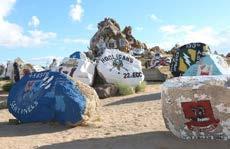
of various sizes and shapes that have been painted with the insignias and emblems of the many units that have made the trip to this desert warfare training center that is roughly the size of Rhode Island.
Not too surprisingly, it’s called Painted Rocks.
According to a news release, “The tradition dates back to the mid-1960s when Col. Robert Osbourne, the post commander at the time, kept a concrete burro to represent the many burros that gather in San Bernardino County, where the post is located, Lowe said.
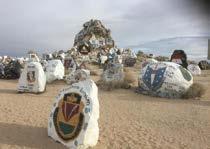
NTC did not exist yet, but units would come here to train before going to Vietnam. The 36th Engineer Battalion was here training and decided to paint Osbourne’s burro. Colonel Osborne saw that and was not pleased, and they repainted it. And then, every couple of weeks, this kept happening, where the burro kept getting painted.
Osbourne realized that this tradition was going to continue, so he designated an area where units could paint their insignia, and Painted Rocks was born. That was in 1967, but it really didn’t catch on until the post became the National Training Center. The idea for NTC was born in the late 1970s, and they conducted their first rotation in 1981.
NTC officials don’t know exactly how many rocks have been painted. Since 1981, every rotation—nine or ten a year for the last 43 years—units have been dropping rocks there. No one’s rock gets painted over. The oldest insignia still found at the collection of boulders represents Fort Hood, Texas, and features the picture of an alligator.”
Reportedly, the training at Fort Irwin was so rigorous that a week there was worse than an entire deployment to Iraq.

We’re proud to offer “Student Stringers” articles from our Lucerne Valley Middle/High School students who are earning community points in their Helping Hands graduation program. These students are mentored by staff teacher David Prouty, who has an English/Journalism background. Each story is vetted and then passed along for publication within the Lucerne Valley section of PULSE PUBLICATIONS, publisher James Conkle.
This partnership is approved by LVUSD, Andrea Moretz Office Manager Helping Hands program, Rusty LaGrange, founder of the project, and owner/publisher of The PULSE PUBLICATIONS, James Conkle. For further Information on this project or for similar ones call 760-617-3991 or email sales@pulseofthehighdesert.info
ON MARCH 14TH, Lucerne Valley Middle/High School went all out in celebration of Pi Day. Pi Day at Lucerne Valley High was organized by Cynthia Parker, who is a teacher from the Lucerne Valley High School math department. Pi Day is a day to celebrate the number π, which is approximately 3.14159. It’s on March 14th because the date 3/14 represents the first three digits of π. People often have fun with math activities and eat pie to celebrate the day. During lunch time, students watched their peers and teachers compete in a fun and friendly pie-eating contest; it was staff versus students. During the contest, the contestants put their hands behind their backs and waited as slices of pie of their choosing were served to them. Then, on the count of three, the competition started. English teacher Gary Cope started off strong but

eventually counselor Kevin Barda came in victorious as the first place winner. For the student side of the competition, sophomore Christian Barajas emerged as the winner.
When asked about the event, Lucerne Valley Middle/High School math teacher and organizer of the Pie Day event Cynthia Parker said, “I think everyone had a ton of fun and I’m very happy to
have had the opportunity to host this event.“ Cynthia Parker also stated “I think Pi Day was a success and I’m looking forward to holding the event for years to come.” The event not only provided a fun break from regular school activities but also highlighted the importance of math in a creative and engaging way. Pi Day at Lucerne Valley Middle/High School was truly a memorable and enjoyable celebration for everyone involved.

ON MARCH 13, another club fair was put on by students involved in ASB at Lucerne Valley Middle/ High High School. The purpose of the school’s club fairs, which take place during lunch, is to bring awareness to the various clubs and for the clubs to raise money. This club fair had a carnival theme and several clubs participated. Although food and other items (one club was selling slime!) were available to be purchased, the carnival-like booths were free. There were many fun games and activities for students to play and participate in. The
 By Gavan Strauss
By Gavan Strauss
class of 2026, for example, had a balloonpopping booth. A lot of attention was given to this club fair and, as a result, it was very busy. There was hardly anywhere a person could go without seeing something club related. Overall, the club fair was a great success. Even the smaller clubs that might not have necessarily raised a lot of money were able to get exposure for their clubs.
According to Christian Barajas, a class of 2026 officer who worked at the balloonpopping booth, “I had a lot of fun working at our booth. It was fun to watch everybody

trying to pop the balloons. I was very happy to be a part of it.” Lucerne Valley Middle/High School teacher and ASB advisor added, “Our club fairs are really starting to build up. Our kids are really starting to get excited about them. They are a great opportunity for our clubs to get recognition and to recruit new members while also earning some money.” The success of this club fair suggests that the fairs will continue to get bigger and bigger and that the students will continue to get more and more excited about them.


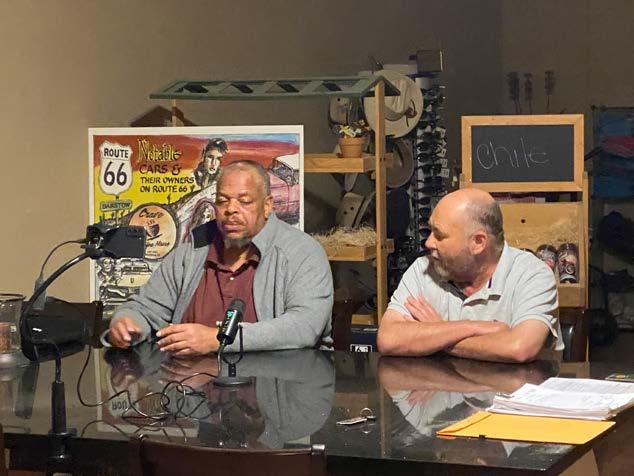
IT’S LIKE A NEWS BROADCAST from Saturday Night Live, except it happens on a Thursday. Their show is called Real Talk Barstow. They’re on Facebook at 6:00 p.m. and on average they get 8,500 views each night that they broadcast from their makeshift stage. Their funny, mad, and most often straight shooters about what’s happening in our little oasis.
Sometimes too straight which is how Tex Williams likes it. He doesn’t mince words. He wants to kick ass. Rip out the old and insert the new and expose all of the Mayor’s and City Hall’s dirty little secrets. While Leonard Williams is the voice of moderation—of reason. He wants
to proceed with a plan. Where Tex thinks it’s all bad and needs to be nuked, Leonard can see where some of what the City does is worth saving.
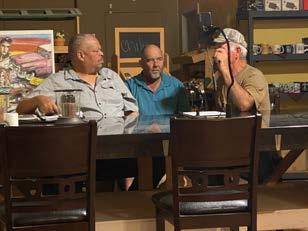 By J.P.Garner
By J.P.Garner

Measure Q for example.
They both think it’s being misused but it’s something our city needs. It wasn’t intended to pay for the lawsuits the Mayor caused. And, as for him, the good doctor, they both heartily agree that he’s a chump who has turned Barstow upside down with his misconduct and pathetic leadership. They’re not afraid to say that he needs to go if our town is ever to get back on track.
What they seek in the hour or so they broadcast is the truth of things. The thing our City Council denies us: transparency. And that even bigger thing that takes guts: honesty. We’re in desperate need of both. They want people to not only think about these things but to talk about them too. And when November rolls around, to act on them by voting.
That’s why they do the show. They don’t get paid and there is no script. Just straight talk. Just two guys who love their town and know more about what’s right about Barstow than the man doodling in the BIG chair during Council meetings. You should check them out. It’s fun and it’s real: https://www.facebook.com/RealTalkBarstow

“Did you see that we have a Rock Rose in bloom?”
My daughter called me through the house. No, I had not seen it. “Yeah, it’s the one in front of kitchen window.”
This lured me to the window to see the one delicate pink blossom making its debut for Spring. Soon we will have a riot of color surrounding our home with blessings. It’s one of my favorite things this time of year.
It is, indeed, Spring, and April is Parkinson’ Awareness month. One way to celebrate is to get out there. Take a therapeutic stroll or roll in your neighborhood, or at a park. Get outside and let the sun soak into your bones.
The olive tree is budding. The desert hibiscus wants to sleep out the next few weeks before coming to flower with her lovely lavender blossoms.
I see these creations as resolute. They may look dead for a few weeks in the winter, but they promise beauty and joy as Mother Earth renews her Spirit of Spring, age after age.
I’m reminded of a picture of a little mouse wearing a crash helmet, standing in front of a loaded mouse trap, ready to try again for the bait. The large sign before him reads,
“NEVER GIVE UP!”
These beings represent to me a resilience – undeniable benefits of staying alive and active. We need our respite, but we mustn’t stay dormant for long periods. The “use it or lose it” slogan comes to
mind. Hmmm, could this mean we should be moving around more often? Does this mean walking in circles (if appropriate) in our house to get the thousands of steps a day done? During the rain, that’s exactly what my daughter does. Several times a day, she counts out 250 steps around the living room. She works at home, sitting at the computer many hours a day. Have you heard the expression, “Sitting is the new smoking?”
Yikes!
Daily physical exercise had been shown to increase the survival rate in people with Parkinson’s disease, so start today!
According to Becky G. Farley, Ph.D., MS, PT, studies show that at the time of diagnosis people have already greatly reduced their overall level of physical activity and have often withdrawn from sports, recreational and leisure activities. This reduced activity is further perpetuated by a gradual loss of body and spatial awareness, making it less likely that you are going to accurately self-correct your small or slow movements.We should practice skills we don’t want to lose, like it or not…and not just Parkinson’s patients. Increase participation in your favorite activities or start new ones that challenge you. Remind yourself daily what a normal, bigger/faster everyday movement feels like, so you continue to use your full capacity and to recognize when you are not.
I’m aware that exercise is easy to neglect for all of us, but especially for a PD patient. The body gets stiffer and it’s just easier to
 by Ann Miner
by Ann Miner

sit and let it be. It’s up to you. If you want a better quality of life, give more movement a try. What have you got to lose?
Our March meeting featured Greg Cox of Arroyo Physical Therapy (APT). He had information about new research for causes and cures, and about a fraudulent research program that had been ongoing for 25 years! Amazing. Patients had many questions, and his talk was too short. He promised to return in the summer. Some of our support group members already go to APT for therapy and are believers. Call me for more information.
Meanwhile, remember that the Parkinson’s Support Group meets every first Monday at Choice Medical Center, 19111 Town Center Drive, Apple Valley –in front of Jess Ranch.
Feel free to contact me at 760-954-2859 or eannminer@yahoo.com. I love hearing from patients and caregivers.


THE CASA DEL DESIERTO, the fourth and final Fred Harvey hotel/ restaurant/train station in Barstow was built in 1911. It provided elegant dining and hotel accommodations to rail passengers traveling through what, at that time, was still the Wild West. With the creation of the U.S. Highway system, people took to the roads in their cars, and rail travel fell off. Thousands of military personnel were transported by rail during World War II which brought back business for those years. Steam trains had been replaced by diesels that no longer needed to stop to refill water tanks. Non-stop rail travel became the norm.
Service to rail passengers ended in 1962. Santa Fe used the old station as their freight train classification yard and depot until 1970. They built the new fifty million dollars classification yard south of the old station. The old Harvey House complex sat empty except for a small Amtrak depot. Santa Fe demolished the “Reading Room” rail employee dormitory complex that had been on the west end of the complex. They announced that the Harvey House demolition would begin in January 1977. In their opinion, the derelict building had outlived its usefulness and was nothing more than a tax drain and an attractive nuisance liability issue.
Of course, we all know there is no stopping progress. And, to fight a giant company like the railroad would be futile. I drove past the Harvey House many times in the early 1980s. I don’t believe there were any unbroken windows visible on the rear of the building. The only sign of life were the pigeons and other birds flying in and out. And, 1911 was long before California adopted the strict seismic building codes. Bringing the old building up to code to use as a public building would be insanely expensive. Realistically, there was no hope to save the grand old depot. Except, nobody told Garland Dittman.
You could say his story began at the Harvey House. In 1917, Charles B. Willis, a Santa Fe mechanic, met one of the attractive, young Harvey Girls, Mary Indihai, that worked at the Casa Del Desierto. They married and had several sons and a daughter, Mary Ann. Garland Dittman, some years later, came to Barstow as a member of the United States Marine Corps. He met and married Mary Ann Willis. Their children grew up in Barstow and then scattered to other areas of the country.
When his children returned to Barstow in 1973 for their grandmother’s funeral, they were shocked to learn the railroad was planning to demolish the Harvey House. The thought of tearing down the romantic old location where their Harvey Girl grandmother had met, been courted by, and fallen in love with their grandfather was just not acceptable. They told their dad he had to stop them. A sensible person would have known better. Maybe it was a case of once a Marine, always a Marine, never surrender, or perhaps as a good father he wanted to make his adult children happy, but he began his campaign to save the Casa Del Desierto.
He made a road trip that summer with his son Dan. They followed the Santa Fe lines all the way to Fred Harvey’s first Harvey House in Florence, Kansas. He photographed the Harvey Houses still standing, and made a record of the ones that had met the wrecking ball. In 1974 he began meeting with other likeminded people interested in saving the once elegant depot.


He gained support from city officials, especially Mike Bellomy, the Desert Dispatch newspaper, and the Mojave River Valley Museum Association (MRVMA). The “Save The Harvey House Committee” was formed as a part of the MRVMA. Mr. Dittman wrote nearly a dozen articles published in the Desert Dispatch between 1974 and 1976 extolling the benefits of saving the historic building. Countless others wrote letters to Santa Fe and city leaders, and editorials in the Dispatch, all asking to save the Casa Del Desierto. Mr. Bellomy, along with others, applied to the State of California to make the station a historic building. In 1975, the Casa Del Desierto was declared a “Point of Historical Significance” for California. In the same year, the Harvey House was placed on the National Register of Historic Sites in the United States. Santa Fe was not convinced.
In 1976, Sylvia Hearn McMichael, a 1949-1950 Bartow High School alumnus, was living in Hawaii. She came to visit her parents at the Slash X Ranch and heard about the planned demolition of the Harvey House. She knew a little about saving historic buildings. Sylvia McMichael was the president of The Societe Royale Historical Foundation of France, an organization that had saved several castles and historic buildings in France and England. She began corresponding with Dave Ottalini of Barstow KWTC Radio and Winona Kenyon of the MRVMA on how to save the Harvey House.
Santa Fe granted a reprieve in 1977 and gave the City of Barstow until 1978 to furnish a viable proposal for the Casa Del Desierto that had to include practicality, usefulness, and financial viability. McMichael returned, and with Kenyon and Ottalini as co-chairs, formed the Casa Del Desierto Ad Hoc Committee and announced the Societe had voted to
give $300,000 ($60,000 each year for five years) to help fund the restoration project and develop the proposed use plan. In 1978, the various committees combined under the official non-profit Casa Del Desierto Association (CDDA) to begin fund raising and planning. They sent correspondence to every politician and association they could think of. Some of the organizations that joined in their efforts were San Bernardino County Museum Association, Daggett Historical Society, Los Angeles Museum of Arts, and the National Trust for Historic Preservation.
A 1978 “Fund-A-Thon” was held that raised over $12,000. In attendance were three former Harvey Girls, Mayor Barney Keller, Assemblyman Phil Wyman, State Senator Walter Stiern, and actors Pat Buttram, Skip Young, and Kirk Allen. The event was covered by Channel 8 television and Radio K-131. Even in 1978 dollars, it was a drop in the bucket for what was needed.
Community involvement was incredible. A group of Barstow High School students staged a demonstration in front of the Casa Del Desierto holding a thirty-footlong petition with 4,000 signatures asking to save the Harvey House. The pressure by the community led to more reprieves by Santa Fe as plans and proposals were developed. Finally, in 1990, a deal was made.

To acquire the Casa Del Desierto, Barstow had to start a condemnation procedure. With the building condemned, they purchased the twelve acres property from Santa Fe for $218,400 (and an additional $77,000 for the Amtrak wing). The buildings were then donated to the city. The city had received a state transportation center grant of nearly $900,000 dollars for the Barstow Station II project. That project had stalled and the funds were reallocated for the Harvey House, along with an additional 1.6 million dollar grant to renovate and restore the Casa Del Desierto. Things were looking up with a planned 1992 start date.
If you lived around here then, you may remember 1992. On June 28, 1992 we had the early morning 7.2 magnitude Landers earthquake, followed a few hours later by the 6.5 magnitude Big Bear quake.
The Harvey House sustained significant damage, causing a two years delay. A glass half full type city engineer was reported to have said it was a good thing as it exposed the otherwise hidden seismic weaknesses in the old building before the repairs were started. Regardless, eighty percent of the renovation funds were spent on earthquake repairs and seismic retrofitting.

The City of Barstow moved their offices into the Harvey House in 1999. Part of the track-side former hotel rooms are leased to businesses. The Western America Railroad Museum reached a deal in 1991 to use the food preparation and storage areas on the backside of the Harvey House for their museum of railroad history. In 2000, the Route 66 Mother Road Museum opened. This museum has had an estimated 40,000 visitors since it opened. More recently, the Goldstone Deep Space Communications Complex Visitor Center was added upstairs. The original formal dining room on the right of the lobby, and the former horseshoe counter, less formal dining room on the left, are now both called ballrooms and used for events throughout the year.
The list of individual volunteers that worked hard to save the Casa Del Desierto would be very long. In this age of division that we live in today, it is incredible to imagine how the community came together to save this piece of our local history. It is impossible to visit the Casa Del Desierto without feeling that you have stepped back into the golden age of rail travel. The museums are all completely staffed by volunteers and admission is free. It is a great, family-friendly place to visit.
All of the photos in this article are courtesy of the Mojave River Valley Museum. I want to personally thank Katie Boyd for taking time out from her docent duties at the museum to put together the mountain of pre-renovation photos, correspondence, and newspaper articles pertaining to the saving of the Harvey House. The Mojave River Valley Museum, located at 270 E. Virginia Way, is the best source for historical information in the Barstow area. They are open every day from 11:00 a.m. until 4:00 p.m. Admission is free and the displays are amazing.

THE ORGANIZATION IS EXCITED to kick off the process for selecting the 2024 class of Women of Excellence awardees. The annual award was created to highlight women in the High Desert who have worked tirelessly, often breaking down barriers and overcoming obstacles that once seemed insurmountable, to serve others. The awards are presented at the organization’s Annual Black Dress Affair Gala where a group of inspiring women are celebrated for their accomplishments.
The 2024 Gala will be held on Saturday, October 12th at the Courtyard by Marriott in Hesperia. Since 2017, fifty-seven women have been honored at this event.
You may be wondering what the criteria is and how you can submit a nomination for a deserving individual. Nominations are accepted for young girls aged 14 and older up to active adult seniors. The nominee must have demonstrated excellence in COMMUNITY SERVICE/HUMANITARIAN EFFORTS, OVERCOMING ADVERSITY, and BEING A ROLE MODEL. Any
“THE MORE THAT YOU READ,” wrote Dr. Seuss, “the more things you will know. The more that you learn the more places you’ll go.”
High Desert California Writers Club members went into two places, two schools, Topaz Elementary in Hesperia, and Sandia Elementary in Apple Valley, this year to read to children. March 2-6 annually our nation celebrates Read across America Week beginning on the birthday of the beloved author Theodor Seuss Geisel, better known as Dr. Seuss. Some celebrate the entire month of March.
Writers of the High Desert California Writers Club (HDCWC) believe writers are readers and aim to inspire young people to read. So this year, as in past years, members entered classrooms to read to children to celebrate the power of literacy.
The NEA (National Education Association) launched Read across America in 1998 as a year-long program. Their website states five interesting facts about Dr. Seuss. Did you know the following?
1. Green Eggs and Ham was written on a bet that Dr. Seuss could not write a book using only fifty words. (Some school cafeterias serve this epicurean delight during Read across America Week or Month.)
2. When Dr. Seuss got writer’s block, he put on a crazy hat to recharge.
3. Dr. Seuss credited his mom for many of his rhymes.
4. His college peers voted him “least likely to succeed.”
5. In addition to children’s books, he wrote two adult books, one with nude drawings.
HDCWC President, Mike Apodaca read at both Topaz Elementary in Hesperia and

special accomplishment(s) or achievement(s) should also be included. The nomination form is online, easy to complete and located on the website at Todayswomanfoundation.org. An independent judge panel, separate from the Today’s Woman Foundation organization evaluates and rates each nomination. With that said, the quality and detail of the narratives is super important given the competitive and unbiased nature of the process.
By Mary Langer ThompsonSandia Elementary in Apple Valley. He read from his own work (Godsend series) to four classes at Topaz, one being his daughter Nicole Vales’ class. In addition he read to five classes at Sandia.
Former principal and teacher Mary Langer Thompson read to three classes at Sandia—Mrs. Price, Mrs. Brewster, and Ms. Petticolas—all of whom were warm and welcoming. Mary read her children’s book, The Gull Who Thought He Was Dull. During discussion, she learned that one student had a dog named Charisma, and that several students were writers and kept journals. Many students were dressed in literary costume. One was a Cat in the Hat.
It’s important for parents and other adults to read aloud to children, even babies. We hope to have more HDCWC members in schools next year. Until then, Read On!
Our thanks go to Principals Wendy Green Watt and Karen Prestwood for their organization and for providing student escorts.
over the years. I have never organized or run one. I discovered the secret to making a fundraiser fun on Saturday, March 17. Just add horses. I am speaking, of course, about the fundraiser for the horse sanctuary, Smoke’s Equine Oasis. Although the sanctuary is located at Britney Swenson’s Pegasus Training Stables in Yermo, the event was held in Apple Valley at the Coulter Performance Horses facility. It was a family-friendly way to enjoy Saint Patrick’s Day.

Admission and activities were free, although donations were appreciated. There were a variety of vendors selling a wide range of craft type items, as well as healthy dog treats, Tarot card reading, face painting, and nail salon services as well. The vendors were not charged for their spaces, but all gave generously. A silent auction had tables full of items donated by the vendors and many local businesses. A fifty-fifty raffle was also held.

attendees was the horse rides. Stephanie McEwen and Jennifer Horton, both Pegasus Training Stables students, volunteered their time to assist Britney giving rides on Jake and Star. Britney’s sons, Micah and Orion, both helped out as volunteers with setting up and other tasks. Micah took time out from working to ride the mechanical bull. I’m sure he was just testing it to make sure it was safe for the little cowboys and cowgirls. The bull riding was very popular for all ages. There were steer roping lessons that proved it is not as easy as it looks on the big screen.
event.
By John WeaseThe final event of the day was a birthday celebration for Shamrocks (Shammy). She was the only sanctuary horse at the fundraiser. What do you give a horse for her birthday? Carrot cake! Carrot cake encircled with real carrots, a favorite treat of many horses. She enjoyed the carrots but didn’t care for the cake. Jake, the very large paint gelding providing rides to some very small passengers, stepped up to help.
I can relate, Jake. If we are served too sweet deserts, my wife’s portions never make it to the trash.


DJ Sasha donated her time, providing music all day. The sound system was used by Britney Swenson, founder and president of the sanctuary board, for her emotional speech welcoming and thanking all who attended, volunteered, or otherwise helped to make the event possible. She especially thanked her board members, Shauna Anderson, vice president; Louise Carmichael Miller, treasurer; Daryl Schendel, secretary; and Christine Schallmo, Board Member, for helping her realize her long-time dream of starting an equine sanctuary. A sanctuary to “provide a forever home for equines in need with the ultimate goal of showing that older or discarded horses can still have a purpose.”
A popular activity for the younger

Smoke, short for Smoke ‘Em All- the Sightless, is the face and inspiration for Smoke’s Equine Oasis sanctuary. Smoke was an unmanageable twenty-year old that had lost one eye to cancer when Britney saved him from being euthanized. She bonded with him, trained him, and began competing in timed gymkhana events. When he lost the other eye, there was only one option. At least to Britney and Smoke. They continued competing. Competing completely blind, and often winning. Many times, they take home the high point awards.
Britney was confident enough that while Smoke was recovering from the second eye removal, she applied to the Guiness Book of World Records to attempt to beat a record set for running a five-pole course by a blind horse. It was a long, drawnout process that they accomplished in November of last year. Britney had hoped to receive official notice from Guiness in time for the fundraiser but it arrived a few days after. For the fundraiser, Britney and Smoke demonstrated the record-breaking
All in all, it was a great event for a great cause. Smoke’s Equine Oasis is a 501c3 non-profit (pending status). If you can help with a donation, it is tax deductible. It would be a wonderful option for corporate or business sponsors. If you would like to help, but are financially not able, volunteer help is always appreciated. With the changing seasons, there is a lot of grooming needed. Currently there are nine sanctuary horses. They require a lot of paddock cleaning, brushing, and just plain attention.
I want to thank Shelby Blair of Shelby’s Photography for sharing her photos. She donated her time and expertise to capture the event, and most of the images for this article are hers. She does family, wedding and other photos. By appointment, she does equine photo shoots at Britney’s Pegasus Training Stables.
The sanctuary is located at the Pegasus Training Stables at 36853 Ghost Town Road in Yermo. For more information, Britney Swenson can be reached at 442600-9770.

MOUNTAIN for the first time with my sister, Dawn, when she recently flew in from the East Coast. We recalled watching television host Huell Howser visit there in 1997 and were intrigued. Salvation Mountain had again recently landed itself into the news media. So a mere 26 years later, we decided to check it out for ourselves and see what had become of it. We also wanted to find the Niland Geyser, as well as to circle the shoreline of the beleaguered Salton Sea, but that is a story for another day.
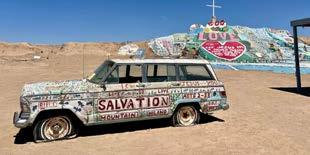
On June 20, 2023, journalist Ariana Bindman wrote, “In the sun-scorched Imperial County region, the barren swath of land has two prospective buyers: T D Walton — a self-described “Christ-follower” and organizer from Encinitas who moved to the desert community less than a year ago — and Salvation Mountain Inc., a nonprofit that has worked in tandem with the Slab City community for the past decade. Both have applied to purchase all 610 acres, California State Lands Commission representative Sheri Pemberton told SFGATE.
Walton has offered $1.5 million, including a $25,000 deposit, to “preserve and rehabilitate Salvation Mountain and Slab City to a safe space with a good reputation,” according to a letter of intent shared by the commission. Part of his plan, according to the letter, also entails ousting Salvation Mountain’s current management and taking over operations.
Now, he and other Slab City representatives are in an arms race for the land that’s home to the famed monument and nearby community of squatters.”
It all began when a man from Vermont named Leonard Knight became a born-

again Christian at the age of 36 in Lemon Grove, California. Knight’s passion for the Lord was on fire and he wanted to share his creative vision with the world as a testament to love.
In 1980 handyman Knight traveled to Nebraska and created a giant hot air balloon that read “God is Love.”
By 1984, the balloon, which never really ascended, had rotted so Knight began creating his Noahesque project called Salvation Mountain mostly out of concrete near Slab City, also referred to as The Slabs, in Niland, California. It took its name from concrete slabs that remained after the World War II Marine Corps Camp Dunlap training camp was torn down.
However, in 1989, Salvation Mountain collapsed under its own weight. Knight took it as a sign that the his higher power wanted to guide him. Knight began re-building Salvation Mountain using adobe, straw, tires and a tangle of trees covered with 100,000 gallons of paint to resemble a hot air balloon on its side. All of the items were found at the local dump.
Knight worked on Salvation Mountain for the next 28 years. It rises to 50 feet in height and grew to 150 feet in width. As the Clampers monument dedicated in 2016 reads, “Salvation Mountain is the culmination of a personal religious intensity few mortals will ever experience.”
Imperial County and California state officials attempted to have Salvation Mountain torn down in 1994. They claimed Knight was a squatter and that the paint he used was lead-based and therefore, toxic. The art community around the world rallied to preserve Salvation Mountain and won. Knight’s message promoting God’s unconditional love for humankind was not lost on his many fans and fellow artists.
In 2000, Salvation Mountain was deemed a National Folk Art Site. Then in 2002, Salvation Mountain was named a National treasure in the Congressional Record of the United States.
The 2007 movie, Into the Wild directed by Sean Penn, which is based on a true story, featured scenes at Salvation Mountain with Leonard Knight. Slab City and the Salton Sea were the last stops before vagabond and adventurer Christopher McCandless headed to Alaska on his continuing quest for ultimate freedom but met with tragedy instead.
Salvation Mountain Inc., a non-profit charity group, was formed in 2011, to
By Jaylyn And John Earl www.thedesertway.com
preserve the monument. Volunteers keep the paint vibrant as Knight intended and have not changed Knight’s work of art. However, the harsh desert environment continues to take its toll on the monument.
Knight originally intended to live in the largest “hogan,” an igloo-like structure built from 80 bales of straw, broken glass and window putty. The unfinished section is where Knight planned to enclose the area with a dome. Meanwhile, Knight chose to live in his 1940s truck year round with a wooden shack built on the truck bed with his dog named Boy, where temperatures soar as high as 120 degrees in the summer months.
Due to failing health because of diabetes and other ailments, Leonard Knight moved into a long-term care facility in 2011. Knight passed away in early 2014 at the age of 82 years. Leonard Knight: A Man & His Mountain is a documentary released in 2015 about the life and vision of Leonard Knight.
There’s a painted yellow brick road you can follow on foot to the top of Salvation Mountain, if you’re so inclined. See what we did there? I don’t think we’re in Kansas anymore, Toto. It was simply too hot to explore the day we went, but we’re glad we were able to finally experience Salvation Mountain overall.
I don’t want to be a Debbie Downer here, because the feat of a man dedicated

to creating this monument by hand for decades is an interesting one. Perhaps we should just say the August temperature in the triple digits didn’t add to its mystique nor did the fact that a young couple’s U-Haul blocked the driveway so we had to squeeze by. Their large unleashed dog jumped into my sister’s open car door as she exited and urinated all over the back seat when the dog’s owner pulled him out without so much as an apology. At least the poor dog wasn’t dehydrated.
The on-site docent, Dianne, was friendly and informative. Do not expect refreshments or amenities but free flyers about the site are available. Admission to Salvation Mountain is free but donations are gratefully accepted. She said residents of Slab City, called Slabbers, take turns volunteering as docents at Salvation Mountain and follow a schedule.
While we chatted, Dianne admonished a couple of visitors to put their dog on a leash. A woman wore only a large t-shirt to her upper thighs so Dianne asked her if she had anything underneath because nudity was not permitted. The woman assured Dianne she was wearing a bikini. Dianne was skeptical and warned the visitor to not remove her shirt while on the property. Dianne told us that some visitors have taken inappropriate photos at Salvation Mountain in the past. Docents were trying to curtail

any more misuse of the site to ensure a more wholesome experience.
Although Dianne sat shaded under an outdoor canopy, it provided little relief from the oppressive temperature. We asked Dianne if we could give her a cold bottle of water but she politely declined by saying she had water with her. Dianne added the extreme heat has claimed the lives of six inhabitants of Slab City so far this summer. She feared there would be others.
Most visitors don’t venture beyond Salvation Mountain and there may be a good reason. We drove past the postapocalyptic looking, self-touted “last free place in America” known as Slab City, as there were other places in the area that we wanted to explore.
Some things you should know before going. Slab City boasts its anarchy. Folks with addictions should avoid Slab City. Exploding ordinance from Chocolate Mountain Aerial Gunnery Range, nearly 13 miles away, can be heard, so dogs and

THERE WAS A TIME, way back when the Walmart in Barstow wasn’t a Supercenter, there was a McDonald’s at the entrance, and the greeter stationed at its entrance was a Senior citizen. Somehow having an older adult welcome customers was either sane or cheaper, or—and I can’t believe I’m going to say this—politically correct. PC as it is now better known.
So, the other morning—and we’re talking in the wee hours of it—I was pleased to see Irma at the Supercenter’s entrance over by the Pharmacy. She has been with Walmart for as long as memory serves. I joked with her about her tenure and how she should own the damn store by now and she smiled and
persons with PTSD could be affected. East Jesus, a make-shift artist colony part of Slab City, displays an outdoor art museum which can be disturbing to sensitive visitors.
There are no utilities, trash pickup, sewer or water in Slab City. Year round Slabbers prefer a rugged alternative lifestyle that’s not for everyone but during the mild winter months the population swells with snowbirds like clockwork. Residents run the gamut from paupers to millionaires. Many are known only by their nicknames.
Slab City may do without modern conveniences but residents claim there is a strong sense of belonging, despite the hardships of day-to-day survival. Docent Dianne clarified, “Slab City is a community, not a commune.” If you go, we would love to hear your personal experiences in the comment section.
In the shadows of looming change, we predict iconoclasts will fight vehemently to preserve Slab City just the way it is. Judge not lest ye be judged. What we call suffering and misery is called joy and freedom by others. There are no photos and no words.

explained, “I like being where I am.”
I like being where I am.
How many of us can say that? How many of us go to jobs we hate? I did once. I stopped doing that when I retired from the Army. I didn’t hate my job. Just the people I worked for. It’s like that, I’m sure, with many people but not Irma who enjoys greeting people and makes them feel welcome when they enter the store.
She’s like the hostess with the moistest. Soft-spoken and genuine. She warmly greets any and all who manage to find a cart with good wheels and enter that space in which she is often the sole occupant and where she functions easily with a smile and, maybe, a bit of conversation. She’s been there so long that kids she knew long ago are now grown and have kids of their own.
There’s something mystical about that kind of longevity— something reassuring in a world where iPhones are changed as soon as you buy one and the news of today seems no different from the news yesterday. People like Irma are not simply employees, but almost like traditions. Something constant in a time of great change.
Treasures even.
In the month of VOLUNTEERING, our TEAM proudly honors
The comparsion with the Energizing Bunny was given to Jim years ago with all of his energy and just he keeps going and going!

His Santa Claus gigs which have been averaging 15- 25 every year for many so years have been the highlight for him. Seening the children with their smiling faces and with his favorite words to them are “WOW, YOU HAVE REALLY GROWN FROM LAST YEAR” brings out a giggle. That is one event he looks forward to doing of so many reasons.
We (The TEAM) would like to honor Jim Conkle as our Volunteer for the “The Pulse”.
A volunteer is creative, energetic, positive, passionate, reliable, believes in team players, and is dedicated. That sums it up....
Frances Conkle
I’ve been working with Jim since 2018, when he found me to help him relaunch his successful “Route 66 Pulse” magazine and other projects.
He is a great man, an example of volunteerism for all of us. I have never seen someone work so hard and always have a smile on his face. I am very fortunate to have him as a boss and a friend.
His dedication to his projects is admirable, always thinking of others first in everything he does, whether in his publications, events or social projects. I am very proud and happy to work with Jim and this wonderful TEAM.
Jorge Leandro Rodrigues

I would like to nominate my father, Jim Conkle, as the ultimate volunteer. As difficult as it is to separate everything he has volunteered to help me with as a father and grandfather, I can honestly attest to his selflessness as a volunteer to so many. He has always put others first in his pursuit of bettering the world. He never misses a chance to help the community despite often going unrecognized. Most every conversation with him includes a new activity he is engaging in within the community. He never thinks twice about accepting a request for help. This man DOESN’T STOP. He has brought this team together with his spirit of volunteerism and keeps us motivated to continue helping others.
Melissa MischkaIn the early fall of 2022, I crossed paths with Mr. Jim, a meeting that altered the course of my life. It all began when I attended an Inglis Classics event in July and struck up a conversation with Mr. Len. Little did I know, that simple interaction would become a turning point. That same autumn, amidst an unexpected divorce and urgent need for employment to remain in California, Mr. Jim reached out to me. Within an hour of my distress, he invited me to meet his team at an event, an offer I eagerly accepted. Despite my background in healthcare and advocacy, I found myself transitioning into marketing, thanks to Mr. Jim’s faith in me. During our initial meeting, his explanation for his dedication deeply resonated with me: he aspired to build a legacy for his children. Since then, Mr. Jim and his family, particularly Mrs. Frances, have become like a second family to me. His altruism knows no bounds, from assisting with moving furniture to tirelessly working for the benefit of others. Together, we engage in rewarding activities like our annual Santa and elf gigs, spreading joy to those in need. Working alongside Mr. Jim has not only provided me with a sense of belonging but also filled my heart with gratitude and purpose.
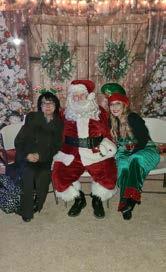 Tiffanie Williams
Tiffanie Williams
The Barstow Community College Theatre Arts Department presents...
Music by Richard Rodgers
Lyrics by Oscar Hammerstein II
Book by Howard Lindsay & Russel Crouse
A tuneful, heartwarming story, it is based on the real-life story of the von Trapp Family singers, one of the world’s best-known concert groups in the era immediately preceding World War II.
In the story, Maria, a postulant at an Austrian abbey, becomes a governess in the home of a widowed naval captain with seven children and brings a new love of life and music into the home.
The production runs April 5th through April 14th at the Performing Arts Center at Barstow Community Center, 2700 Barstow Road, Barstow, CA 9231i.
Friday and Saturday shows are at 7pm.
Thursday at 7pm. Sundays are at 2pm.
PRESALE TICKETS are available only through April 4th.
General - $14.00 + fees
Seniors and Military -$12.00 + fees
Children/Students/BCC staff - $10.00 + fees
**After April 4th, tickets will increase by $2 apiece.** Purchase tickets at www.barstow.edu/PACtickets




1pm Brain Train PB*
8:30am Chair/Beginners Fitness TC* 10am Retrofit TC*
Birthday Celebration SL*
8:30am Retro Walker 11am Brain Train TC*
8:30am Retro Walkers 11am Brain Train TC*
8:30am Retro Walkers
Brain Train TC*
Choice Medical Group began the SENIOR KICKS CLUB over 30 years ago It was created to bring the senior community together to Socialize, Exercise and make new Friends! The Club has grown to over 2500 members and has evolved to offering additional classes, events, educational workshops, lunch venue and MORE! To Learn more about being a Choice Medical Member and Senior Kicks Club VIPContact our Senior Resource Center 760 338 0914 Today!
Events Sponsored by:



SPRINGS, I just may be biased about our volunteer fire department. I am sure it is the finest volunteer fire department in the entire High Desert. And, no, I am not going to “fact check” this. You can, if you like, but you are not writing this. At the present time, there are twelve firefighters, down from twenty-two pre-Covid. All are EMT certified, which is good as eighty percent of their calls are medical emergencies. In 2023 they ran 364 calls. The Fire Department is under the capable leadership of Chief Daphne Lanier.

As an unincorporated rural community, we elect directors to govern our Community Service District. One of their functions is to support our fire department with tax revenues and other funding received by our community. Recently they purchased a new to Newberry fire engine. The last new fire engine was purchased in 2000 and it has seen a lot of service. They found the latest addition for sale in Pennsylvania. It is a 2005 but has only 22,000 miles on the odometer. It is in excellent condition and the price was approximately one-tenth of the price of a new fire engine.
On February 24 of this year, they held a “push-in” ceremony to officially place Engine 392 in service. It was quite an event to witness. As always, our firefighters were looking sharp. They obviously take pride in being the well-trained crew they are. If you are unfamiliar with a “pushin” ceremony, it is an old fire department custom that goes back to the horsedrawn equipment days.

Early fire departments used hand pumper carts that the firefighters pulled to the fire and then operated by hand. Around 1871, steam powered pumpers came into use. These were too heavy to be pulled by men so teams of horses were used. This freed up the firefighters to fight the fire and perform rescues. The steam powered pumpers didn’t get tired arms either. When the fire call ended, the horses pulled the pumper back to the station and were unhitched. The firefighters then pushed the pumper back inside. This pushing in is the basis for the push-in ceremony.
As a side note, the larger fire stations had horse stalls along one side of the station. A quick release lever would open the stall doors if an alarm sounded. The horses were trained to walk out of their stalls and wait in front of the pumper cart. Harnesses, with quick-connect fasteners, were lowered over the horses. In less than a minute, the two or three horse team would be hitched up and running out the door. Motorized equipment replaced horse=drawn in the 1920s.
When I heard they would push the 50,000-pound engine into the fire station, I grabbed my camera and stood well clear. Of course, it was just a simulation. The firefighters, with the help of our CSD directors and a few volunteers, symbolically pushed Engine 392 into Fire Station Number Two as an engineer
 By John Wease
By John Wease
carefully backed it in. It didn’t stay inside long. Rides were given to any that wanted to experience the excitement of rolling down Newberry Road, lights and siren blaring.
Engine 392 has been temporarily equipped with the gear from the old engine as they wait for the new equipment to arrive. The old equipment will go back in the old engine and it will be maintained as a backup. Engine 362 is proudly wearing the new Newberry Fire logo that includes a Newberry School bobcat. A Station 2 is on Newberry School property, it seems fair to include the school’s mascot.
As dedicated, trained, and professional as our fire department is, there is an inherent problem. As a volunteer fire department, all personnel are unpaid. Almost all have to have paid jobs to support themselves and their families. As jobs are few and far between around here, most of the firefighters are away much of the time. Thankfully, The Marine base has a full-time fire department, Daggett and Yermo also help when needed.

To help remedy this, Chief Lanier heard about a program to help train fire cadets. Local junior colleges often have fire science courses but no academy where trainees can receive hands on training and experience. A grant was secured to fund “bunk house” quarters for cadets. A twenty-foot shipping container is equipped with a restroom and women’s dormitory. A forty-foot container has a restroom, kitchen, and men’s dormitory. Clearway has donated $3,000 to pay
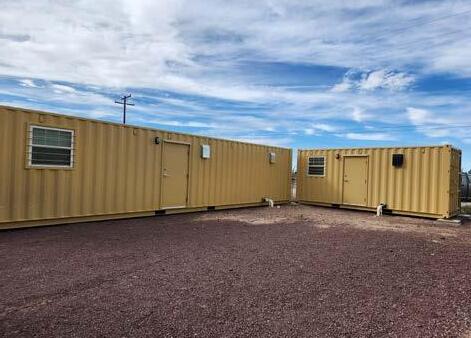
for bunkbeds. The college pays the cadets and supplies their insurance and equipment. They also pay Newberry Fire for training sessions. To quote a Newberry Fire Engineer, it is a win-win situation. It should help with having staff available to answer calls. As these cadets will be freshly trained and have the latest equipment, it is possible the trainers will learn from the trainees as well.
Along with handling calls, and Sunday training sessions, the Newberry Fire Department can be found at most community events. They perform most of the community park cleanup before our July 3rd Independence Day celebration and the Pistachio Festival. They also sponsored our popular “Trunk-OrTreat” event for Halloween. They lead our Fourth of July parade each year. If you want to gauge how well-liked, and appreciated they are, you only need to hear the cheers as they pass by the crowd. Of course, it is July 4th in Newberry Springs and they spray water over (and sometimes on) the crowd.

And so, the next time you see one of our firefighters at an event, take a few minutes to thank them. Or, if you are eighteen or older, and there is no maximum age, see Chief Lanier about joining the Newberry Springs Fire Department. Be a part of something great.



VICTORVILLE, CA - Sol Radiology, a top provider of advanced imaging services, is pleased to announce the launch of two cutting-edge outpatient imaging centers in Victorville, California. This expansion complements our extensive presence in hospitals throughout California and Illinois. It represents a major stride in Sol Radiology’s dedication to elevating healthcare standards and enhancing patient experiences in the High Desert region.
Designed to offer unparalleled medical imaging services, the new facilities are equipped with cutting-edge technology including CT, X-Ray, DEXA, Ultrasound, MRI, PET/CT, Interventional procedures, and 3D mammography, leading the way in patient comfort and efficiency. “Our investment in these advanced imaging systems emphasizes our commitment to providing compassionate care while ensuring the highest quality diagnostic services,” says Dr. Krishna Das, cofounder of Sol Radiology.
Sol Radiology’s new centers aim to significantly reduce wait times for patients, offering walk-in x-rays, efficient
ultrasounds, and state-of-the-art lowdose CT scans that prioritize patient safety and comfort without sacrificing image quality.
At Sol Radiology, we understand the anxieties that can come with medical examinations. That’s why our team of compassionate technologists and staff are committed to providing top-tier service focusing on comfort, speed, and clarity. Our new facilities boast a seamless patient management platform, enabling returning patients to effortlessly schedule exams, manage payments, and access their records online, offering a significant step forward in healthcare convenience.
Dr. Rahul Nayyar, President and CoFounder says, “Delivering top-tier patient care starts with understanding their unique needs and preferences.”
A standout feature of our expansion is the launch of a dedicated breast imaging center under the stewardship of Dr. Megha Gupta, a USC fellowship-trained, high desert native. Dr. Gupta brings her passion for excellence and local expertise back to her community, offering personalized care in ultrasound-guided and stereotacticguided biopsies. “It’s been my long-
standing dream to contribute to the community I grew up in by offering the highest standard of radiological care possible,” says Dr. Gupta.
With these new additions, Sol Radiology is poised to become the premier destination for diagnostic and interventional radiology services in the High Desert communities, setting a new standard for excellence in patient care and diagnostic accuracy.
For more information about Sol Radiology and their available services, please visit www.solradiology.com.
SOL RADIOLOGY is a leader in advanced medical imaging, dedicated to upholding the highest standards of patient care and technological excellence. With a strong focus on innovation and patient wellbeing, Sol Radiology continues to pave the way in delivering the most comprehensive and compassionate imaging services in the High Desert area.
For more information, reach out to: Rosil Sinha
rsinha@collaborativeimaging.com
ON TUESDAY, FEBRUARY 27 , a film crew from the YouTube show, America’s Best Restaurants, was at Billie’s Kitchen on 224 N. 7th Street in Barstow, filming an episode for broadcast sometime in April. The restaurant, a favorite among Barstow’s residents, was nominated by

Yvonne Maldonado some months ago under the show’s Mom and Pop category, describing the food as extraordinary and mentioning that Billie is very active in the community. It will take 5-7 weeks to assemble the show in which Billie’s amazing staff and loyal customers will be featured. #Billie’s Kitchen




Dive into the era of revolutionary radiology services with patients in mind right here in High Desert area. Sol Radiology proudly opened two state-of-the-art outpatient centers designed to bring unparalleled healthcare closer to home.


Why Choose Us? Because your health deserves nothing less than the best:


Latest Technology: Advanced imaging for accurate diagnoses.
Expert Team: Our board-certified radiologists and dedicated staff are here for you.

Convenience at its Best: Walk-ins welcomed, all insurances accepted.
Visit our website or call us today to schedule your appointment. Discover the difference Sol Radiology is eager to make in your health and well-being.
In line with our commitment to provide top-tier healthcare, Sol Radiology upholds strict safety protocols to ensure a safe environment for all our patients and staff.
ON FRIDAY MARCH 8 Mohahve Historical Society VicePresident Delvin Harbour was in Old Town Victorville at his favorite place on Earth, the California Route 66 Museum on “D” Street. Decked out in his Route 66 hat and museum badge, he was all ready to promote the “hidden gem” of the High Desert, the Route 66 Museum in the historic Route 66 and Railroad town of Victorville, California.
Tina Patel and her cameraman were in the desert doing a “Social Spotlight” for KCAL News Mornings, for the segment “Exploring Victorville.” They had started out at the 76-year-old hole-in-the-wall cafe, Emma Jean’s Hollandburger, only a few miles west of there on the old Route 66, where they interviewed owner Brian Gentry. Now they were ready to continue their journey through a “mix of past and present” with Delvin at the iconic Route 66 Museum.

The camera panned around the front of the room, as Tina nostalgically described what she saw: The 50’s diner booth, the juke box, and the 1917 Ford Model T pick-up truck. There Delvin demonstrated how to crank and “start ‘er up,” as no electric starters existed back then! After all, that model, previously owned by a local couple, preceded the Mother Road’s opening in 1926, fast approaching
ONE of the good guys! Bill Cadenhead, who joined MHS with his wife Diane in 2010, passed away February 27 during a scheduled surgery. The news came as a great shock to me, as Bill thought he’d be recovered in time to go on the March 24-25 overnight fieldtrip to the Route 66 towns of Amboy, Goffs, and Needles. And as a long-time docent at both the Victorville and Barstow Route 66 Museums, I’m sure he would have added some tidbits of interesting information along the way. When Delvin started volunteering in 2012, the Victorville Route 66 Museum was in good hands every Friday, with Bill as the gift shop cashier, and Delvin as the knowledgeable docent.
Bill was a “car guy.” When he retired from his job at a Volkswagen dealer, he had plenty of time to race VW Bugs and Corvettes down in San Diego. That explains why his email is vwracers.

something. Jim Conkle, another Route 66 car guy, had this to say: “Bill was one great roadie and friend. RIP good buddy.”
Bill and Diane were active MHS members. They loved to go on our fieldtrips, even ones that took us “out in the middle of nowhere” like to the Black Mountain petroglyphs, or all the way through LA traffic to the Green Book Exhibit at the Peterson Auto Museum. (Hmmmmm, AUTO Museum) Bill also showed off his acting ability by playing John Wayne both
its Centennial in 2026. Delvin mentioned how his own family had driven the Route 66 from Oklahoma during the Dust Bowl era. Maybe that’s how he learned to crank up a Model T!
Next stop was the World Map, filled with stick pins of the home towns of folks who had stopped by the museum. Tina wondered why so many people the world over are drawn to Route 66 travel. Delvin had her answer: The Route 66 is a “good slice of America,” taking travelers across 8 states from Chicago to Los Angeles, which has been commemorated in movies, TV shows, and songs. Tina agreed that it was “a gem to have it here.” The segment ended with Delvin discussing future plans for the area, and reminding people that the museum operates on donations and gift shop sales. So you locals have no excuse but to stop on by to see what others travel so far to experience. Good job, Delvin. Follow his advice: GET OUT AND EXPLORE!
on our 2022 float and in a skit at the Apple Valley Legacy Museum the following spring. He had the walk down pat!
Needless to say, Bill will be missed. We send our condolences to Diane and the rest of the family. You are in our thoughts and prayers.


IT’S BEEN A LONG TIME since I’ve faced a packed auditorium of high school students, and I don’t love getting up at the crack of dawn. But I was honored to be asked by Granite Hills High School teacher and NAACP member LaMarche Mosley to help celebrate Black History Month with three presentations of “The Green Book and Two Apple Valley Guest Ranches” on Friday Feb. 23 periods 2, 3, and 4. And quite a celebration it was! Thanks to Theatre teacher Cheri Glisson and a competent group of students, who were experts at working all the equipment in the Rogers Evans Performing Arts Center, it all went like clockwork. Some footage from Civil Rights era newscasts played as students filed in. An extremely gifted sophomore, Kara Kintani, belted out a spirited rendition of “Lift Every Voice and Sing,” all three verses. Jada Kaltenbach, a 2021 GHHS graduate who currently works for the AVUSD at Phoenix Academy, assisted with the slides. The tech experts even inserted a clip of


Popago Trail, all very close by.
Mrs. Mosley and I hoped to get across to the students the historical significance of the Bell Mountain community, settled by Black homesteaders, that sits right within their school district. In fact, some current students are grandchildren or great-grandchildren of early Bell Mountain settlers. Equally important was making sure the definitions of homesteading and “proving up” a piece of property were clear, as well as the importance of the “Green Book” in guiding minority travelers to safe stopping places along the Route 66 during the Jim Crow years of segregation.
A 2014 National Parks Service project hoped to locate as many Green Book sites along the route as possible, and with our help, the locations of the two
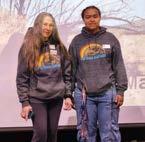
Bell Mountain area ranches, the Raglan and the Murrays, were established. Both were listed in several of Victor Green’s booklets, published from 1936 through 1966, two years after the passage of the Civil Rights Act. Candacy Taylor’s cleverly titled book, “The Overground Railroad,” highlights the Murrays, which is included in the Smithsonian’s Traveling Green Book Exhibit, which has been on the road since October of 2020. After leaving the Peterson Auto Museum in Los Angeles, its location since December 2023, it will continue its journey to other museum sites around the country until 2025.
Hopefully, through this presentation, the students in attendance now have a better idea of some of the hardships people faced because of their race. Their own grandparents and greatgrandparents lived through this time of racial segregation. This was not just something that happened in a movie or on the other side of the world. Two Green Book sites, who welcomed people of all races, were right here in Apple Valley, at that time referred to as “the outskirts of Victorville.” And they were the only sites listed between Needles and Los Angeles, a long trek across the desert and mountains.
As I looked out over the sea of faces of the hundreds of young people and the ten or twenty adults in attendance each period, representing many races and nationalities, it was clear that, despite some problems still persisting, we have come a long way since the days of segregation. And I am proud to say that the area now known as Apple Valley played a significant role in the gradual acceptance of people of other races and the eventual integration of this country.

MARCH 13, 2024, marked the day four Mohahve Historical Society members earned their “Flying Aces” scarves on a VIP tour of Edwards Air Force Base. The most difficult part was setting an alarm for 4:30 AM to leave at 5:30 AM to arrive at the Century Circle parking lot at West Gate by 7:45. The sun finally came up on this brisk cold morning just in time to see the dry lake beds covered with water as we approached the base.
Vice President Delvin Harbour, Director Meera Maheswaran, her husband Indran Subramaniam (Life members), and me, President Marcy Taylor, were joined by five employees of the Aviation Contractor JT4, and five members of MOAA, i.e. Military Officers Association of America, two of whom are also our members. Our tour was conducted by Art Thompson, Chairman of the Flight Test Museum Foundation; Rex Moen, Chairperson for Friends of the Flight Test Museum; George Welsh, Flight Test Museum Director; Todd Amon, Aircraft Restoration Curator; and Jimmy Dolittle III, Colonial, USAF, Retired, our tour guide and grandson of the famous Lt. Gen. Jimmy Dolittle.
This important trip will be broken down into more than one article, so you are getting Edwards Air Force Base VIP Trip Part 1: OUR PURPOSE
As you know, the very first monument placed by Mohahve Historical Society, in conjunction with the City of Victorville and the city of Adelanto, was the 1988 “Sound Barrier Cracked,” celebrating Air Force Brigadier General Charles “Chuck” Yeager. Originally placed inside the
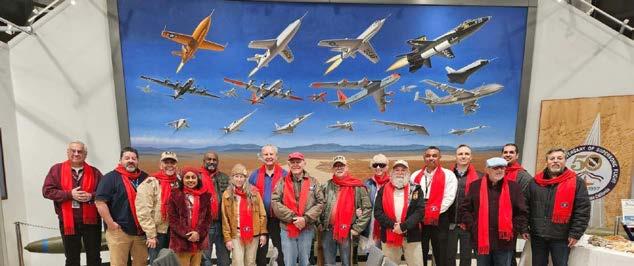
Main Gate entrance of George Air Force Base, its future was uncertain after the official closure of the Base in December 1992. MHS Board Members transferred ownership to Edwards Air Force base in 1997, where it has remained on the corner of Rosamond and Yeager Blvd. at Yeager Park. Our monument was signed over to the Secretary of the Air Force with the understanding that, if Edwards ever closes (which is highly unlikely), it will revert back to the Mohahve Historical Society.
Since 911 Day the Base has been on heightened security due to the sensitivity of their work. Therefore, it has been very difficult or impossible for civilians to enter the base to see the Yeager monument, the bronze statue that stands next to it, or the outstanding Flight Test Museum. However, there is good news! A new and bigger Flight Test Museum is under construction outside the gate, which everyone will be able to enter and enjoy. Mohahve Historical Society Board of Directors is requesting that, when the museum is complete, the “Sound Barrier
GRAB YOUR COWBOY HAT AND BOOTS, saddle your horse, and mosey on over to the Apple Valley Inn, Cottage #153 the weekend of April 5, 6, and 7th to help the Apple Valley Legacy Museum volunteers and supporters

celebrate their 9th Anniversary. The threeday porch sale, raffle, and silent auction will run from 12-4:00 all three days, followed by a good old-fashioned Shindig Saturday evening from 4-7. A $20 ticket will get you a chicken dinner, live music, an entertaining skit, and a chance for a photo op with the original Apple Valley Inn stagecoach. Help us keep the museum doors open and Apple Valley history alive with your support. Tickets are on sale during open hours, Monday through Saturday 10-4, and Sunday 12-6. (760) 985-1918 for additiona
Cracked” monument, along with the statue of Chuck Yeager, be moved to the new location.
Armed with paperwork and news articles, I presented our case, and it seems like the idea has been well-received. We hope to support the effort with a donation and the purchase of some bricks to be placed with the many others already in place along the “Heritage Walk.” We will be traveling as a group back to Edwards for our August field trip when more of our members will be able to visit Yeager Park and to experience the Flight Test Museum. It’s well worth the two-hour drive. Stay tuned for updates.



YES, WE LIVE IN A DESERT, a place known for being hot and dusty with little rain. Yet at our Feb. 22 Mohahve Historical Society meeting, Senior Hydrogeologist and Engineer of the Mojave Water Agency, Tony Winkel, assured us that there is plenty of water around here. You just may not realize it, because most is either imported or running underground. Attendees were inundated with more information and statistics than most of us could digest in one evening. The well prepared presenters shared a wealth of information, informative slides, and a series of maps showing the Mojave River’s 100 mile path from the San Bernardino Mountains to Soda Lake, where it mysteriously disappears into the ground.
The very interested attendees hit Tony and his assistant John Seielstad with lots of questions, all of which they expertly and patiently answered. We learned that we are far from being the only river that flows north, as water flows down, not south. And releasing water from Silverwood Lake Dam does not flood houses down below. That is left up to Mother Nature, who does not have control valves on her rainstorms.
Our education continued on Saturday February 24 when we visited the High Desert Interpretive Center for a fieldtrip hosted by Tony Winkle and Kenny Sousa. There we learned about the inner workings of water pipes, with their water releasing valves. Informative kiosks

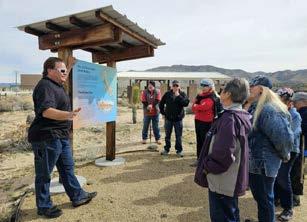
provided information about the State Water Project, facts about the Mojave River, and an introduction to the biological resources and ancient inhabitants of the area. And best of all, we got the chance to witness the raging Mojave River in all its glory, flowing northward towards the Bear Valley bridge. From our vantage point, we could even (almost) see the location of the historic Hesperia flume (i.e. wooden water pipe) that carried water from Big Bear to Lime Street Park, powered only by gravity.
Tony volunteered to come back to speak to us again, assuring us he has several more equally interesting and informative presentations on various water-related subjects. You know what, Tony? I think we may take you up on that.
April 5, 6, 7- Apple Valley Legacy Museum 9-Year Anniversary Weekend Collectibles sale, silent auction, museum visits 12-4:00 daily Apple Valley Inn Cottage 153, 20601 Hwy 18, Apple Valley
April 6- 4-7:00 PM Shindig at the AV Legacy Museum, Cottage #153 $20 ticket includes dinner, live entertainment, raffle “The Apple Valley Stagecoach Returns Home”
April 8- Victorville NAACP Branch 1082 general membership meeting- 6 PM Branch Office All are welcome.
April 9- Friends of the Apple Valley Library - 11:30 speaker Councilman Art Bishop Update- What’s New in our Town
April 13- 10-5:00- Oro Grande Days 18880-19242 National Trails Highway Booths, live music, Western entertainment
April 13- 9-3:00- History Day at the Santa Fe Train Depot in San Bernardino Historical societies, local authors, live music, activities and demos
April 20- 11-4:00- Mojave River Valley Museum BBQ 270 E. Virginia Way, Barstow Booths, live entertainment, good food, museum visits
April 25- Mohahve Historical Society meeting- Lone Wolf Colony Doors open 6:30 7:00 speaker- Delvin Harbour “Cruising Route 66 in Style”
Although it may seem obvious why the presidential mansion is referred to as the White House, there’s more to the story than the paint color. Before President Theodore Roosevelt began calling his residence the White House in 1901, it was more often referred to as the “President’s House” or the “Executive Mansion.” However, since the homes of U.S. governors were also called executive mansions, Roosevelt named his home the “White House” in order to distinguish it above all others. The house’s color resulted from a lime-based whitewash that was applied in 1798 to protect the exterior from cracking.



Senior Tech Training with Bryan
April
The Resort, 12424 Hesperia Rd
Door 33, Victorville
Come and learn how to sign up fro our classes online.
Bring your cell phone and/or tablet with you.
Sign up by calling 1 760 261 6498
Percy Bakker Community Center
9333 “E” Avenue Hesperia, CA 92345
From 1:00 PM to 2:00 PM
Thursday,
April 4 Melissa Boyd So Cal Edison
April 11 Tom Lecoq This-n-that #6
April 18 Bill Lopez & Norman Bossman
“The Beatles’ first visit to USA
April 25 Griz - Hesperia Old Town Museum Replica of old library
All are welcome to attend
Friends of the Apple Valley Library
14901 Dale Evans Parkway Apple Valley, CA 92307
Tuesday, April 9, 2024 from 11:00 AM - 1230 PM
Speaker: Apple Valley Mayor Pro Tem, Art Bishop Topics: “Town updates & Brightline Project”.

SINCE APRIL IS DEDICATED to the ideals of volunteerism, I thought I would take a glance back into our wonderful country’s history to learn how the United States became one of the most generous populations in the world.
We have big hearts and in times of need locally, nationally, or worldwide, we also have big open wallets – both federally and individually.
But where did this ideal come from? A land of immigrants who, through the ages, cast aside differences in ethnicity, religion, politics, class status, and become united in a belief that we are here to assist those in need who may not be able to assist themselves alone.

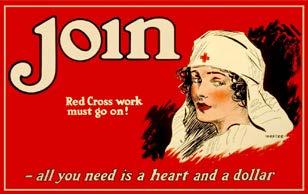
In the eons that humans have walked this floating globe, the term volunteer has not really been around that long. Sure, people have always helped their fellow humans in one or another but the actual word volunteer did not become widely known until 1330, when a poem was written, Of Arthur and of Merlin.
This poem delved into King Arthur and his knights trying to make a more fair and just England, sometimes against overwhelming odds.
The word comes from the Latin, voluntaries, which spelled out means willing or of one’s own choice to do something for someone or something else. Volunteer found its way there in the United States in 1755 and became a mainstay for the way we live our lives.
The Revolutionary War could not have been successful with regard to winning the fight for freedom from England without so many civilians helping to pay for the war’s effort. Cash donations, clothing, food stuff, and volunteering for dangerous assignments like spying, covert military operations, field hospitals, and the like.
We are, according to most research, a faith-based country and with that belief comes the ideal that to help one’s neighbor is in fact an act of helping ourselves.
According to Points of Life, ‘Throughout April, lend your time, talent and passion to making a real difference in your own backyard and causing a ripple effect around the world.’
During the Civil War, the untiring volunteer efforts of a woman named Clara Barton, brought such relief for wounded soldiers during the conflict. Without other volunteers following Barton’s lead, the war may have led to very different results. In fact, Barton started the American Red Cross in 1881, and to this day they are usually the first organization to be on the ground in any life-threatening emergency, no matter the location in the world.
During the Great Depression of the 1930s, soup kitchens, free medical help, clothing drives, food pantries, and the like were set up for those less fortunate.
During World War II, the American people showed their love for the country
B y John R Beyerby voluntarily cutting back on many goods that had been common in daily life, including meat, stockings, gasoline, butter, and many other items, to support the war effort.
Consistently, the American people reach out their hands to help those in need.
Neighbors helping to rebuild a neighbor’s home after a natural disaster.
Communities coming together united when personal tragedy befalls another in that social network.
Food banks, clothing drives, school supply giveaways, and more are just a part of American culture now. No one truly thinks about it. It just is.
As President Reagan once so eloquently said in his Farewell Address in 1989, colloquially known as his shining city upon a hill speech: “For we must consider that we shall be as a city upon a hill. The eyes of all people are upon us. So that if we shall deal falsely with our God in this work we have undertaken, and so cause Him to withdraw His present help from us, we shall be made a story and a by-word through the world.”

In simpler terms – if we do not live up to the dreams and aspirations of our Founding Fathers, when this great nation was formed, then we will be forgotten.
And, perhaps we should be.
But, that is unlikely when each of us looks around and notices all the selflessness this country offers to those not as fortunate. I do not believe we will let those ideals formed so long ago be discarded.
So, in this month of April, reach out a hand to a stranger and lift them up.
But why just one month? Let us make it a yearly tradition.
John can be reached at beyersbyways@gmail.com
THE POPULATION OF EARTH is around 7.8 billion. For most people, it is a large figure. However, if you condensed 7.8 billion into 100 persons, and then into various percentage statistics, the resulting analysis is relatively much easier to comprehend.

Out of 100:
• 11 are in Europe
• 5 are in North America
• 9 are in South America
• 15 are in Africa
• 60 are in Asia
• 49 live in the countryside
• 51 live in cities
• 75 have mobile phones
• 25 do not have the availability to go online
• 7 received a college education
• 93 did not attend college
• 83 can read
• 17 are illiterate
• 33 are Christians
• 22 are Muslins
• 14 are Hindus
• 7 are Buddhists
• 12 are other religions
• 12 have no religious beliefs
• 26 live less than 14 years
• 66 die between 15-64 years of age
• 8 are over 65 years old
“IWAS AMAZED when I realized how crooked my body was.” My friend, Donna Henderson was telling me about her treatments with Beth Tonning. “She can evaluate what’s going on with your body, kind of like a blood panel but it goes much deeper, is more thorough.”
effects, so you never have something that gives you relief without taking something away from you. I wanted to find a niche where I could only do good.”
Beth combines therapeutic massage with corrective exercise and personal training.

Beth Tonning is the therapist who owns Valley Massage and Therapeutic Bodywork in the Tuscola Professional Building in Apple Valley. I went to see her recently, not for treatment, but to learn about what she offers, because so many people have told me what a difference she has made for them.
Beth is so knowledgeable about why she does this work, and really cares about her clients.
The oldest of twelve children, she was born in Quito, Ecuador while her parents were missionaries for a short time. But her heritage is really in the Victor Valley. Her great greatgrandparents came to the desert in 1918. Her great-grandfather farmed with Stoddard Jess.
With his tractor, he flattened the area where Jess Ranch is now. The family has always been an integral part of the community.
Beth wasn’t always interested in being a therapist. She’s a consummate musician who plays the cello and piano. Not new to managing a business, she opened her first music store when she was fifteen. She wanted to have a music school one day. Then, at age seventeen, she began to develop muscle problems, particularly painful spasms in her shoulders. These lasted for two years, after being misdiagnosed many times. As a result, she had to stop playing the cello, as her body became twisted.
She eventually had Deep Brain Surgery (DBS) in 2011, and it gave her empathy that had been missing. She saw where medicine was amazing and where it fell short. She decided to devote her life to serving people who could not get relief from medicines and other treatments. She wanted to directly impact people in a powerful way that was not harmful.
“With meds you pay a price with side
“Massage can’t fix certain things on its own. What can I do within the scope of my practice to make people feel as good as possible for the longest time?” This became a dream.
What Beth offers is very different from traditional experiences. She explained that she partners with the client to make a plan to get them back to 100%. Everything in the facilityis based on not just what works but what is going to calm the mind. The color scheme, what is in the facility, where it is, are all intentional.
Donna Henderson said, “You leave feeling calm, it isn’t just bodywork. My next appointment is tomorrow, and I can’t wait!” said Donna.
Bill McDaniel mentions that Beth has a quiet, gentle voice. “It’s not just the body, but also the mind.”

McDaniel, a paraplegic since 1973 due to a car accident, is a bit of a miracle himself. But that’s a story for another time. However, he said he finally has hope for improvement. Bill had so much to tell me that I can’t fit it all in here. Suffice it to say that he’s a huge fan of Beth Tonning’s techniques.
“In my practice, I focus on what I can do, not what I can’t do.”
Bodies are making a shift in a positive direction. Clients are getting their lives back. It’s a new breed of massage therapy.
After the interview, I began mentioning Beth’s services to others. I discovered how many people I know already are her clients. I was at a women’s gathering when I sat next to a young mother who said she had sciatica. “You need to go see Beth Tonning,” said Lillian Brown, who was nearby. “She cured my sciatica.”
Valley Massage &Therapeutic Bodywork 760- 221 2272


Get ready to mark your calendars because the annual community festival in Pinon Hills is just around the corner!
WE ARE THRILLED to announce an action-packed day filled with entertainment and excitement that you won’t want to miss.
Join us for 10 thrilling games of BINGO, the local fundraiser for a great cause, on Saturday, June 1st from 10am to 2pm at the festival grounds. But that’s not all! Our festival has something for everyone with amazing music, a kid’s zone for all ages, a fun-to-dunk experience, and a variety of unique vendors to explore.
Secure your tickets early to take advantage of exclusive pricing before they go up at the door. Don’t let this opportunity for a day of community fun slip away!
For ticket information, email Summerfest@pinonhillschamber.info or call 760-868-7191 to reserve your spot as a vendor. Come and be a part of this unforgettable community celebration. See you there!


As you approach a new chapter in your life, we recognize that the transition to Medicare can bring about a mix of emotions and questions. We’re here to provide clarity and support every step of the way.
We’re excited to invite you to our exclusive Medicare 101 Class, designed specifically for our members transitioning to Medicare. This educational session will empower you with the knowledge to make informed decisions about your healthcare coverage.
In this class, you will learn about the different parts of Medicare, enrollment periods, and how to select a Medicare supplement that best fits your needs. Our experts will be available to answer all your questions and guide you through the complexities of Medicare.
Understanding your healthcare options is crucial, and we want to ensure you have all the necessary information to choose the best plan for your future. Don’t miss this opportunity to demystify Medicare and gain valuable insights into your upcoming eligibility.
We look forward to assisting you in this important transition.







